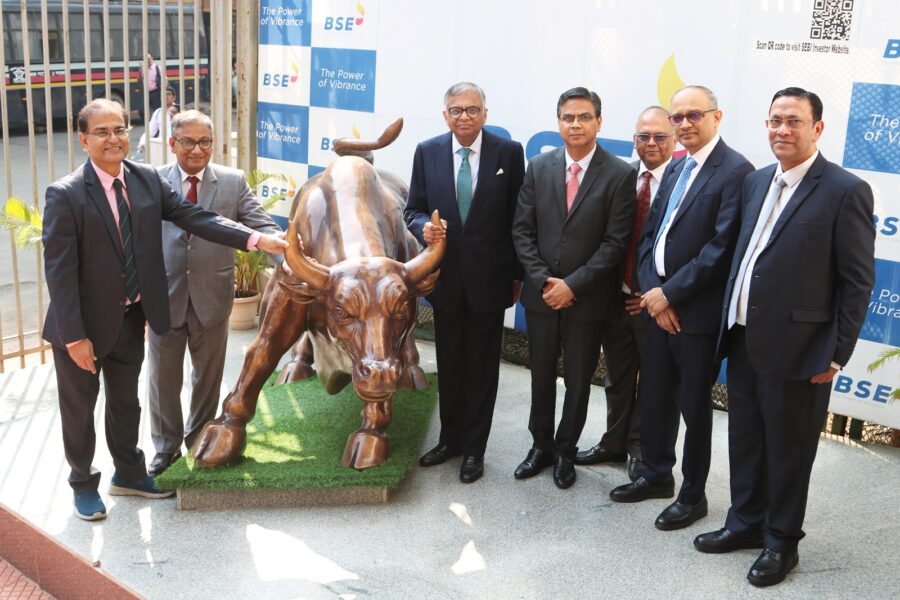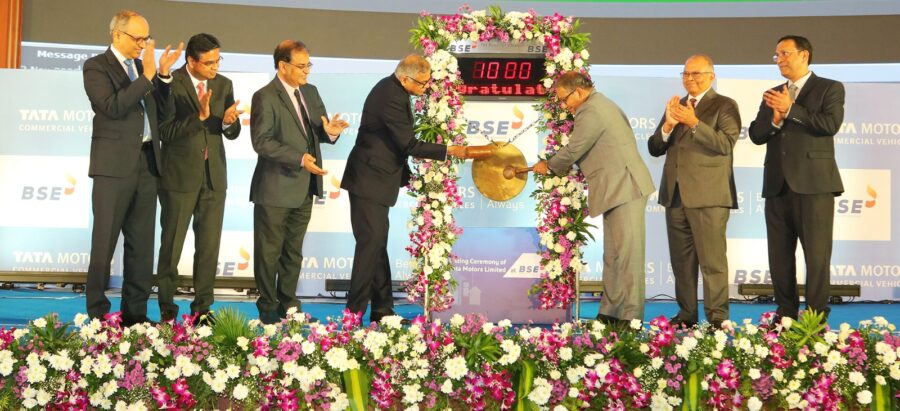Tata Motors has started a new chapter with its commercial vehicle business now listed separately in the stock market. The shares of the new Tata Motors Limited, which now represents the commercial vehicle arm, were listed at Rs 335 a share on the NSE. That’s about 28 percent higher than the discovered price of Rs 260.75.
The listing represents the formal separation of the passenger and commercial vehicle businesses of Tata Motors. This move was planned earlier this year and took effect from October 1, 2025, after getting the green signal from the National Company Law Tribunal in Mumbai. The notion for the demerger was to make both businesses more independent and to better focus on their respective markets.
At the listing event, some of the top leadership of Tata Motors and Bombay Stock Exchange were present. Tata Sons Chairman N Chandrasekaran, Girish Wagh, Managing Director and CEO of Tata Motors, joined the bell ringing ceremony. They were also accompanied by Prof. Subhasis Chaudhuri, Chairman, BSE and Sundararaman Ramamurthy, MD and CEO, BSE.

The demerger has produced two totally different companies. The old Tata Motors Limited has been renamed to Tata Motors Passenger Vehicles Limited. This company will cover all passenger cars, electric vehicles and Jaguar Land Rover (JLR) business.
The newly listed company will continue as Tata Motors Limited, and it will control the whole commercial vehicle portfolio, which includes trucks, buses, and small commercial vehicles. This structure enables both arms to have their own leadership, strategy and investor focus.
A new Certificate of Incorporation for the new company was issued from the Registrar of Companies on October 29, 2025. With this, both the Tata entities are now officially declared separate and independent entities.
Industry experts believe that the move provides investors with a better picture of individual businesses. The passenger car division is booming with EVs and JLR, while the commercial vehicle side is still leading with trucks and mobility solutions for logistics and infrastructure.
This demerger is considered as a key moment as Tata Motors. It is a signal to a more focused future for both the divisions and is a reflection of the group’s effort to build stronger and more specialized businesses under the Tata umbrella.

